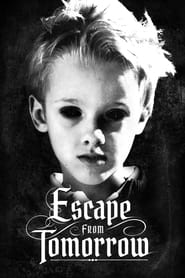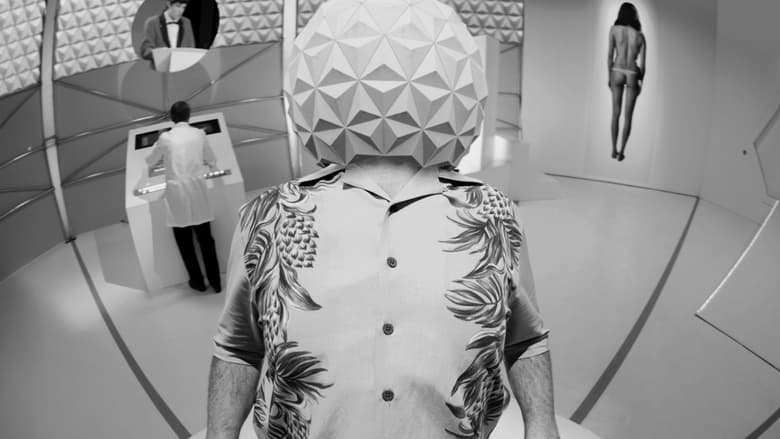“Escape from Tomorrow” (2013) is an experimental black-and-white film that takes us on a trippy descent into the dark side of the American dream. With stylistic shots and unconventional storytelling, it follows a man’s unraveling mind during a family vacation at Disney World. As fantasy blurs with reality, the film presents disturbing and surrealistic moments that question our perception of innocence and happiness. These mind-bending visuals and haunting atmosphere combine to create an unsettling experience that lingers long after the credits roll.

CLICK HERE↓↓↓📺_Watch Escape from Tomorrow 2013 English Subtitles_
Review
In the world of cinema, some films have a special place in our hearts, not because of their overwhelming success or mesmerizing visual effects, but because they challenge the boundaries of conventional storytelling. One such film is “Escape from Tomorrow,” a daring and thought-provoking masterpiece that will leave you questioning reality itself.
Released in 2013, “Escape from Tomorrow” gained attention long before its premiere due to the peculiar circumstances surrounding its production. Shot covertly in Disney theme parks without any official authorization or knowledge, this low-budget independent film quickly became a sensation in Hollywood. The audaciousness of director Randy Moore and his crew cannot be overstated; they clandestinely captured scenes within the iconic locations of Disneyland and Disney World, threading together a narrative that both explores our obsession with fantasy and meticulously deconstructs the notion of dreamlike perfection conjured by these fantastical venues.
The plot centers around Jim White (played marvellously by Roy Abramsohn), a middle-aged father who embarks on an increasingly surreal journey through the Magic Kingdom during what was supposed to be a joyous family vacation. As he navigates through the park’s familiar attractions, we witness his gradual descent into madness, blurring the lines between imagination and reality.
The story unfolds with an eerie ambiance that seeps into every frame, plunging us into Jim’s unraveling psyche. Moore masterfully uses black-and-white cinematography to intensify this disconcerting atmosphere further. The absence of vibrant colors evokes a sense of foreboding, amplifying the unsettling experience for viewers who expect Disney’s trademark visual spectacle.
One cannot help but appreciate the cast’s exceptional performances throughout this bizarre journey. Roy Abramsohn captures Jim White’s mounting anxiety and paranoia with unwavering commitment. He conveys a palpable sense of internal struggle as he grapples with his own desires and demons amidst an environment designed to dazzle and distract.
The supporting cast, including Elena Schuber as Jim’s wife Emily and the exceptional Katelynn Rodriguez and Annet Mahendru as their daughters, showcases a level of skill that elevates every scene they grace. Their performances strike a delicate balance between ordinary family dynamics and the underlying tensions that plague Jim’s mind.
While “Escape from Tomorrow” may have been overshadowed by its unconventional production history, it would be remiss not to appreciate its profound impact on contemporary cinema. The film received critical acclaim for its unapologetic exploration of themes like consumerism, escapism, and the dangers of pursuing an idealized fairytale existence.
Randy Moore’s decision to shoot in real Disney parks without permission adds an extra layer of commentary on corporate control and the pervasive influence of media conglomerates in shaping our dreams and aspirations. The film forces us to confront uncomfortable truths about our society’s obsession with fabricated happiness. As noted by Moore himself, “Escape from Tomorrow” serves as a modern-day fairy tale with dark undertones—exposing the cracks beneath a shiny veneer.
Despite its limited release due to legal concerns surrounding copyright infringement, “Escape from Tomorrow” achieved cult status among film enthusiasts. It sparked intense debates among critics who either praised its audacity or questioned its artistic merit. This division only served to fuel interest in this enigmatic creation further.
While it did not receive widespread commercial success or major awards recognition, “Escape from Tomorrow” remains an important milestone in independent filmmaking. Its creative courage paved the way for other boundary-pushing directors who sought to challenge conventional norms in pursuit of innovative storytelling techniques.
The film’s haunting soundtrack composed by Abel Korzeniowski deserves special mention as well. Its ethereal melodies serve as auditory cues that heighten tension throughout the narrative. Korzeniowski’s score wraps around each scene like a spectral mist, leaving viewers immersed in an otherworldly realm where reality and fantasy merge.
Critics have not been shy in their praise for “Escape from Tomorrow,” praising its exceptional cinematography and innovative storytelling. However, it is essential to acknowledge that the film is not devoid of flaws. Some argue that the narrative loses its grip on coherence towards the end, leaving viewers bewildered rather than intrigued. Others lamented the lack of character depth beyond Jim White’s mental decline, longing for more nuanced explorations of other family members’ struggles.
Nevertheless, these criticisms should not overshadow the tremendous achievement that “Escape from Tomorrow” represents. The film stands as a testament to what can be accomplished when artists fearlessly challenge established norms and push boundaries. It forces us to confront uncomfortable truths about our own aspirations and dissects our never-ending quest for manufactured happiness—a quest influenced by media conglomerates eager to shape our dreams.
In a world filled with cookie-cutter blockbusters and formulaic narratives, “Escape from Tomorrow” stands out as a bold deviation from the norm—a sinister yet captivating exploration of the human psyche set against an enchanting backdrop. Whether you view it as a critique of consumerist culture or an artful deconstruction of our obsession with escapism, this film will leave an indelible mark on your perception of reality—much like Jim White’s descent into madness within the confines of Disney’s enchanting kingdom.
Technical Data

- Release : 2013-10-11
- Runtime : 90
- Genre : Horror, Fantasy
- Cast : Roy Abramsohn as Jim, Elena Schuber as Emily, Katelynn Rodriguez as Sara, Danielle Safady as Sophie, Annet Mahendru as Isabelle
- Crew : Lawrence Kimble as Production Design, Gioia Marchese as Producer, Gioia Marchese as Casting, Abel Korzeniowski as Original Music Composer, Randy Moore as Director
- Revenue : 0
- Budget : 0
- Company : Mankurt Media, Producers Distribution Agency
- Popularity : 7.298
- Summary : In a world of fake castles and anthropomorphic rodents, an epic battle begins when an unemployed father’s sanity is challenged by a chance encounter with two underage girls on holiday.
- Tagline : Bad things happen everywhere.
